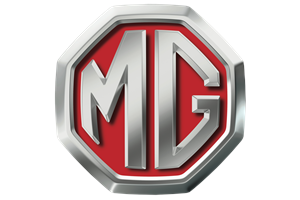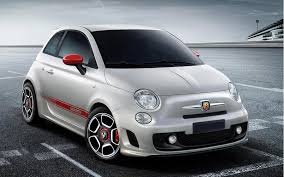


This edition of the MG Maestro 2.0 EFi is the 5 speed / Manual version and was first brought out in 1984. This was at around the same time as the introduction of the 1985 Lamborghini Countach LP5000S QV and the 1984 Audi Quattro Sport 2.2 T.This particular MG Maestro has a 1994cc Naturally Aspirated Petrol powerplant with 4 cylinders in a St formation.
The Maestro shares its Petrol St4 engine configuration with the likes of the 2019 Ariel Atom 4 2.0 Turbo and the 2013 Caterham 7 620 R 2.0 L Supercharged. If you're looking for other fast cars which share the Maestro's Front Wheel Drive, Hatchback combination then how about the 2022 Volkswagen-VW Golf R Performance 2.0 Turbo or the 2020 Toyota Avalon TRD 3.5 V6.
Weighing in at 984 kgs (2169 lbs) this makes the MG Maestro 2.0 EFi in the same weight category as the 2014 Abarth 695 Biposto 1.4 Turbo or the give or take 50kg.
![Mini Cooper Countryman John Cooper Works 1.5 Turbo - [2022] image Mini Cooper Countryman John Cooper Works 1.5 Turbo - [2022] image](/editionimages/2335.jpg)
The MG Maestro shares the same bhp with the 2022 Mini Cooper Countryman John Cooper Works 1.5 Turbo (134 bhp)
In terms of power the 1994cc 8V St4 engine produces 115 bhp (85 kW) @ 5600 rpm similar to the 2022 Mini Cooper Countryman John Cooper Works 1.5 Turbo (134 bhp) or the 2017 Ford Fiesta 1.5 TDCi ST-Line 120 (118 bhp).
The Naturally Aspirated St4 throws out 134 lb-ft (181.6 Nm) @ 2800 rpm placing it with cars of similar torque performance figures such as the 2016 Ford Fiesta ST 200 1.6 Turbo (159 lb-ft) or the 2015 Mazda MX5 2.0i Roadster Coupe (148 lb-ft).
If one combines the weight with power or torque performance for the MG Maestro you can get a better idea of it's real world performance.
![Peugeot 205 T16 1.8 16v Turbo - [1984] image Peugeot 205 T16 1.8 16v Turbo - [1984] image](/editionimages/1330.jpg)
The 1984 Peugeot 205 T16 1.8 16v Turbo (141.7 bhp per ton) has similar Bhp Per Ton stats as the MG Maestro.
The MG Maestro has a Power to weight ratio of 116.8 bhp per ton and 136.1 lb-ft per ton. Bhp Per Ton figures of the 1984 Maestro competing with the 1984 Peugeot 205 T16 1.8 16v Turbo (141.7 bhp per ton) or the 1988 Volkswagen-VW Corrado G60 (141.7 bhp per ton).
If you agree with the late great Carroll Shelby then arguably an even better indicator of potential performance, Torque. Use weight as well and you end up with - Torque per ton, with the MG Maestro generating around 136.1 lb-ft per ton. If you're curious as to what other cars have as much torque to weight then look no further than the 2012 Volkswagen-VW Golf R 2.0 Turbo (161.1 lb-ft per ton) or the 1994 Toyota Celica GT Four ST205 (161.1 lb-ft per ton).
With a 0-60mph time of 8.50 secs or a 0-100km/h (0-62mph) of 8.8 secs, this made the MG Maestro 2.0 EFi as fast as the 2012 Land-Rover Range Rover Sport 3.0 TDV6 (8.50 secs) the 2004 Land-Rover Discovery 3 4.4 V8 (8.50 secs) the 2000 Volkswagen-VW Golf GT TDi 150 (8.50 secs) the or the 1997 Peugeot 306 2.0 XSi (8.50 secs). This MG Maestro 2.0 EFi is also faster than the 2012 Jaguar XJ V6 (8.60 secs) the 2006 Land-Rover Range Rover Sport 3.6 TDV8 (8.60 secs) the 2004 Audi A4 1.8T Sport (8.60 secs) the and the 2003 Volkswagen-VW Golf 2.0 FSI (8.60 secs).
When talking about the performance of the MG Maestro on the drag strip it can reach a quarter mile in an estimated 16.54 secs @ 82.7 mph. Similar performance down the quarter mile can be found with the the 1972 Jaguar E Type 5.3 V12 (16.46 secs), the 2008 Mazda RX8 R3 231ps (16.46 secs), and the 2002 Alfa-Romeo 156 GTA 3.2 V6 (16.47 secs).
Modern performance cars are often artificially restricted to 155mph. The 1984 version of the MG Maestro 2.0 EFi has a maximum speed of 115mph.
If maxing out your car on the AutoBahn is your thing and you're wondering what's faster than the 1984 MG Maestro 2.0 EFi then how about the 2013 Skoda Rapid 1.4 tsi Spaceback (126 mph), the , or the 2004 Vauxhall-Opel Corsa 1.8 GSi (126 mph).










Mercedes S Class 63 L AMG
Engine: Naturally Aspirated Petrol | 6208cc 32v V8
Top Speed: 155 mph
0-60mph: 4.50 seconds

Toyota Supra SZ 2.0 Turbo
Engine: Turbo Petrol | 1998cc 16v St4
Top Speed: 249.4 kph
0-100kph: 6.4 seconds



















